Overview
- Brief Narrative
- Headset used by Erich Raeder during the Nuremberg war crimes trials.
- Date
-
use:
1945 November 20-1946 October 01
- Geography
-
use:
Palace of Justice;
Nuremberg (Germany)
- Credit Line
- United States Holocaust Memorial Museum Collection, Gift of the IBM Corporation
- Contributor
-
Manufacturer:
International Business Machines Corporation
Subject: Erich Raeder
Physical Details
- Classification
-
Audiovisual and Photographic Materials
- Category
-
Audio equipment
- Object Type
-
Headphones (lcsh)
- Physical Description
- Black plastic earpieces connected by headband; paper identification tag attached w/wire
- Dimensions
- overall: | Width: 6.540 inches (16.612 cm)
- Materials
- overall : metal, plastic, leather
Rights & Restrictions
- Conditions on Access
- No restrictions on access
- Conditions on Use
- No restrictions on use
Keywords & Subjects
- Corporate Name
- International Business Machines Corporation
Administrative Notes
- Legal Status
- Permanent Collection
- Provenance
- The headphones were donated to the United States Holocaust Memorial Museum in 1996 by the IBM Corporation.
- Record last modified:
- 2023-08-25 09:48:55
- This page:
- https://collections.ushmm.org/search/catalog/irn11610
Download & Licensing
In-Person Research
- By Appointment
- Request 21 Days in Advance of Visit
- Plan a Research Visit
- Request to See This Object
Contact Us
Also in IBM Corporation collection
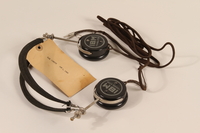
Karl Dönitz's Nuremberg war crimes trial headphones
Object
Headset used by Karl Dönitz during the Nuremberg war crimes trials.
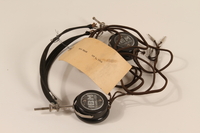
Hans Frank's Nuremberg war crimes trial headphones
Object
Headset used by Hans Frank during the Nuremberg war crimes trials.
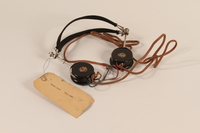
Wilhelm Frick's Nuremberg war crimes trial headphones
Object
Headset used by Wilhelm Frick during the Nuremberg war crimes trials.
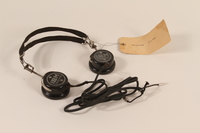
Hans Fritzsche's Nuremberg war crimes trial headphones
Object
Headset used by Hans Fritzsche during the Nuremberg war crimes trials.
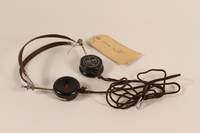
Walther Funk's Nuremberg war crimes trial headphones
Object
Headset used by Walther Funk during the Nuremberg war crimes trials.
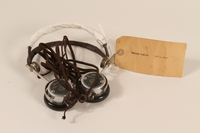
Hermann Göring's Nuremberg war crimes trial headphones
Object
Headset used by Hermann Göring during the Nuremberg war crimes trials.
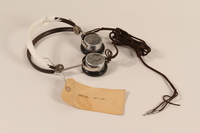
Alfred Jodl's Nuremberg war crimes trial headphones
Object
Headset used by Alfred Jodl during the Nuremberg war crimes trials.
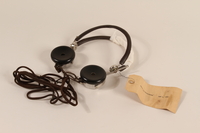
Ernst Kaltenbrunner's Nuremberg war crimes trial headphones
Object
Headset used by Ernst Kaltenbrunner during the Nuremberg war crimes trials.
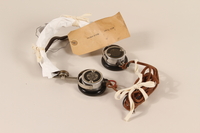
Wilhelm Keitel's Nuremberg war crimes trial headphones
Object
Headset used by Wilhelm Keitel during the Nuremberg war crimes trials.
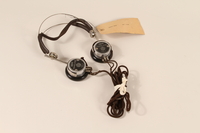
Rudolph Hess's Nuremberg war crimes trial headphones
Object
Headset used by Rudolph Hess during the Nuremberg war crimes trials.
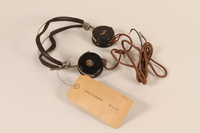
Joachim von Ribbentrop's Nuremberg war crimes trial headphones
Object
Headset used by Joachim von Ribbentrop during the Nuremberg war crimes trials.
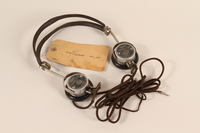
Arthur Seyss-Inquart's Nuremberg war crimes trial headphones
Object
Headset used by Arthur Seyss-Inquart during the Nuremberg war crimes trials.
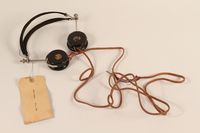
Alfred Rosenberg's Nuremberg war crimes trial headphones
Object
Headset used by Alfred Rosenberg during the Nuremberg war crimes trials.
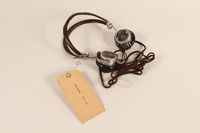
Fritz Sauckel's Nuremberg war crimes trial headphones
Object
Headset used by Fritz Sauckel during the Nuremberg war crimes trials.
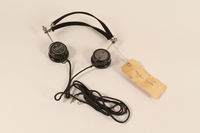
Hjalmar Schacht's Nuremberg war crimes trial headphones
Object
Headset used by Hjalmar Schacht during the Nuremberg war crimes trials.
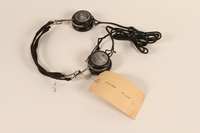
Albert Speer's Nuremberg war crimes trial headphones
Object
Headset used by Albert Speer during the Nuremberg war crimes trials.
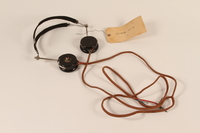
Julius Streicher's Nuremberg war crimes trial headphones
Object
Headset used by Julius Streicher during the Nuremberg war crimes trials.
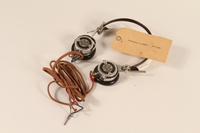
Konstantin von Neurath's Nuremberg war crimes trial headphones
Object
Headset used by Konstantin von Neurath during the Nuremberg war crimes trials.
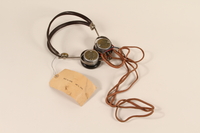
Franz von Papen's Nuremberg war crimes trial headphones
Object
Headset used by Franz von Papen during the Nuremberg war crimes trials.
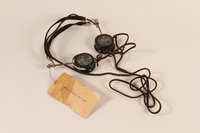
Baldur von Schirach's Nuremberg war crimes trial headphones
Object
Headset used by Baldur von Schirach during the Nuremberg war crimes trials.



